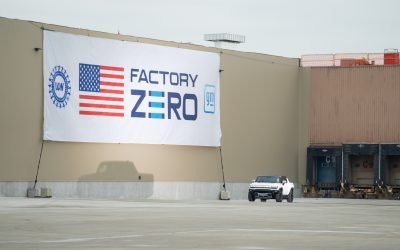For almost 30 years, the United Nations has held an annual climate summit on the premise that humans are causing catastrophic, planet-destroying climate change through carbon dioxide emissions that must be stopped. The latest climate summit (COP26) in Glasgow ended with a non-binding agreement among the 40+ participating countries to re-commit to net-zero CO2 emissions (not emitting more CO2 into the atmosphere than what is removed from it) by 2050.
This re-commitment was made even though none of the participating countries had come even close to the net-zero targets (a yearly occurrence). Nevertheless, as in the previous climate summits, nearly all promised to reduce the use of fossil fuels, commit funding to renewable energy, cut funding to oil exploration, and to use less coal power.
Mark Carney, a former central banker and the leader of the Glasgow Financial Alliance for Net-zero (GFANZ), formed this consortium of over 450 financial services firms in 45 countries to achieve the net-zero targets faster, so as to avert the increase of global temperature for more than 1.5 C degrees. He announced at COP26 that the GFANZ has $130 trillion in private capital that it will use to facilitate the decarbonization of the world economy.
What should business leaders do in the face of this information?
They could become true believers and embrace the net-zero targets as gospel without investigating their full context. For example, Bjorn Lomborg has shown that if the United States achieved net-zero today and stayed there until 2100, it would reduce temperature increase only by 0.16 C. That’s because most of the CO2 emissions will come from China, India, and other developing countries. Moreover, going net-zero would cost every American over $11,000 every year.
Regardless of these facts, the true believers are duty-bound to cut CO2 emissions, regardless of the cost.
Alternatively, business leaders could take a pragmatic approach. They have observed governments making climate action promises and announcing net-zero targets and financial services firms joining the GFANZ. They have noticed the surveys showing that eight out of ten of Americans (and nine out of ten of Canadians) believe that we are experiencing catastrophic climate change brought on by CO2 emissions from human activities (such as the use of fossil fuel energy in industry and agriculture). They have also witnessed social media companies ban fact-based challenges to the predictions of human-caused climate catastrophe.
The pragmatists would appease the majority view and begin greenwashing their companies: pronouncing themselves as true believers, announcing net-zero targets, claiming exclusive use of renewable energy, green marketing of their products, etc. – without making substantive changes.
Both strategies are disastrous.
The true believers’ strategy will be costly and lead to misery for all: energy shortages, declining living standards, declining production, erosion of profits – and a negligible impact on temperature. That cannot last long.
The pragmatists’ strategy may work for a while but is as harmful as the true believers’ approach in the long term because faking is futile. You can pretend to do all the “right” things but pretending does not change the fact that the net-zero targets are not achievable or desirable – if the business wants to be successful in the long term.
There is an alternative strategy for businesses to deal with climate change: one that is based on facts and human wellbeing (as opposed to no human impact on the planet) as the standard.
Identifying such strategy requires:
- obtaining an objective (instead of one-sided) perspective on climate change. CO2 emissions have a complex relationship with climate and have both positive and negative impacts. The latter are not catastrophic, and humans can adapt to changing climate, as they have done throughout the industrial era. Objective research on climate change and CO2 emissions is increasing and being reported by authors such as Lomborg, Rupert Darwall, Michael Shellenberger, Steve Koonin, Alex Epstein, Patrick Moore, and Judith Curry.
- applying the knowledge of climate change to one’s business: how can it adapt to climate change profitably? What products, services, and technologies will people need to adapt? How can the business innovate and create such material values for customers, and thereby wealth for the owners?
This kind of strategy goes against the mainstream and requires courage. The courage comes from the knowledge that this is also the strategy that allows business to perform its proper role in society: to produce and trade material values for profit maximization, which makes it possible to adapt to climate change and advances wellbeing for all.



